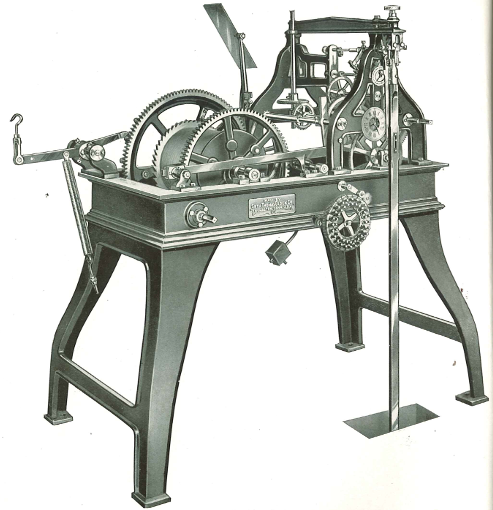This is am image taken from a book on tower clocks, published in 1911. The book itself is from the Building Technology Heritage Library at the Internet Archive.
 |
The apparatus above, from page 34, powers both the dial and bells of a tower clock. The opening in the floor is for a pendulum of about 175 lbs. I find the image much more striking (pun quite intended) than those of the exterior, dials and all, of tower clocks. Besides the handsome illustrations, the book offers technical details and a description of the operation of tower clocks. There also is a directory of the companies installed tower clocks in 1911, as well as testimonials by satisfied customers.
If you are interested in historical buildings and / or engineering this book is for you.
Fascinating reading.
Ohhh – there is a clock museum in Lockhart, Texas, on the corner of Courthouse Square, which has the works for a couple of tower clocks like this on display. The museum is small, but fascinating and some of the docents are real comedians! I highly recommend it- and they have a nice website, too – http://swmuseumofclocks.org/
I enjoyed this bit of text from page 28:
This type has all the advantages of the purely electric clock but at the same time depends for its motive power on the force of gravity, the most constant power known.
That sounds odd when bluntly stated, but I guess it’s true, and will be even after the sun burns out or blows up. You could add that it’s the most constant power we know and can’t quite explain.
I have a Seth Thomas mantle clock that I found in a trash can in an alley 65 years ago. It was probably 50 years old then. It still keeps time and chimes the quarter hours.
There’s one at the University of California – San Francisco Medical Center:
http://www.artandarchitecture-sf.com/historic-old-clock.html